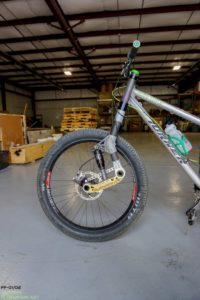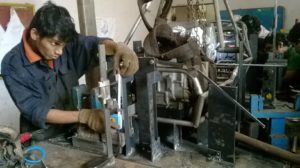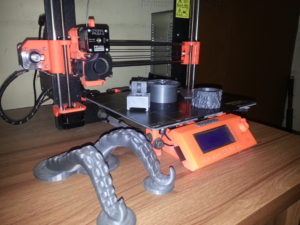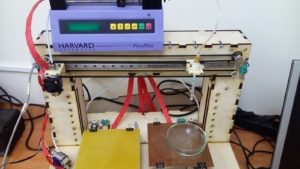Purpose and Benefits of a Prototype for Your New Product
A prototype, by definition, is the original form or model on which something – in this case, a potential product – is based or formed. Creating a prototype is an essential part of the product design process. Prototypes allow you to evaluate an idea; they allow you to determine whether your product concept is feasible and whether it’s on the right track. Creating a prototype lets you be creative and modify your design without financial constraints. While you’re creating a prototype, it’s important to consider the purpose you want your product to serve , and whether your budget will allow you to reach this goal.
A prototype can also be beneficial during the patenting process. Patenting a product while it is still in the prototype stage can offer a number of benefits. For example, patenting provides you with the exclusive rights to your product, meaning it will be safe from replication and unauthorized distribution. Patenting can also give your product a strong position in the market and increase your negotiating power with investors and buyers.
Whether the product you’re trying to produce is physical or digital, a prototype can be used to show how the finished product will look or demonstrate how it’ll function. Whether you’re trying to produce hardware or software, the steps in the prototyping process remain relatively similar.
 1. Create a Concept Sketch
1. Create a Concept Sketch
The first step in designing a prototype is to create a concept sketch. Creating a rough sketch is not as time consuming as creating a digital drawing and is therefore the quickest and easiest way to – quite literally – get your ideas down on paper. Concept sketches can also be useful if you ever have to defend the rights to your intellectual property.
If there’s a product already on the market similar to the one you wish to design, you can consider its design to gain some inspiration. This can be done by taking apart a product, or assessing the code in a program’s software. It is, however, crucial that you never copy someone else’s design – instead, use what you learn from the construction or coding of other products to improve your own design.
The concept sketching stage can also help you determine which features are necessary in your product design, or it can help you catch flaws before you invest additional time and money into creating a prototype.
 2. Create a 3D CAD Design for Your Product
2. Create a 3D CAD Design for Your Product
Once you have created a concept sketch – or sketches – that you are comfortable with, it’s time to develop a computer-aided design (CAD) of your prototype. You might want to use a 2D or 3D design generator. A 3D generator could be a beneficial choice if you are designing a hardware product, as a 3D design allows you to rotate and observe your product from different perspectives. A CAD lets you include much more detail than your initial concept sketches. You can use your digital CAD to create a 2D or 3D rendering that shows what your final product will look like. Having a digital rendering of your product can also allow you to assess the ways your design might be too complex. At this point you can choose to simplify your design if necessary.
If you do not have experience using digital programs, such as those used to create a CAD, you should consider hiring a professional to help you create these designs. Cad Crowd offers lots of options when it comes to finding a CAD designer.
 3. Build Your Physical Product Prototype
3. Build Your Physical Product Prototype
After you have created a digital design of your product, it is time to create a three-dimensional version of it – by creating a physical prototype. Physical prototypes should be simple and can allow you to exercise your creative ability by using everyday household items. Alternatively, you can purchase materials that are intended to be used in prototyping. Shapelock, for example, is a durable plastic material that is malleable once it’s heated under hot water.
Creating a physical prototype has several benefits. You’ll be able to test the functionality of your design, how different materials can impact that functionality, and assess the associated costs of using certain materials in your design. By physically creating a prototype, you gain the opportunity to determine the best way to describe your product – this can be beneficial if you’re looking for investors or want to sell your product. Having a simple design can help you explain the function of your product to potential investors and buyers. You may need to create several prototypes before you settle on a final design.
You can choose to do this step yourself, or involve a professional – either through an agency, or perhaps by seeking out a handyman or a student in an industrial design program.
An alternative to building a prototype is to use a modeling program to create a digital version or rendering of your prototype. Prototype on Paper and InVision can be used to create renderings of hardware prototypes, and Dribbble and Freebiesbug can be used to create software prototypes.
 4. Research Manufacturers
4. Research Manufacturers
After you have created a functional prototype, you may wish to conduct some research into the costs of manufacturing your product. By obtaining quotes or estimates from manufacturers, you can better assess the financial feasibility of your product design. If you find that manufacturing costs will exceed the limit of your budget, then you still have the option to modify your design. Check out The Pros and Cons of Manufacturing in China if you’re considering manufacturing your new product abroad.
 Quickly Creating a Prototype
Quickly Creating a Prototype
When you’re designing a product, it’s crucial to create a functional prototype as quickly as possible – prototyping in under 24 hours is a possibility for both hardware or software. If you’re trying to quickly create a prototype, it’s essential that you keep your design simple. Sally Dunne, of Pedal Petals, who designed and created a functioning prototype in under 24 hours, says “having a coherent idea with minimum components helps when you need to prototype an idea quickly.”
This concept also applies when developing software prototypes. For example, an app’s design should be kept simple in the early stages, and improvements can be made once the product becomes functional. Thomas Laurinavicius, who studies the success and failures of app design, suggests that app designers should prioritize the top features that they would like their app to have and focus solely on those during the developmental stages.
In addition to keeping a design simple, the prototyping stage isn’t the time to create a flawless product. To create a prototype quickly, you can’t spend a lot of time focused on small details. Reid Hoffman, the founder of LinkedIn says, “If you’re not embarrassed by the first version of your product, you’ve launched too late.”
When quickly creating a prototype, it’s important to know your options, both in terms of prototype production and which shortcuts you can take. For example, 3D printers are an extremely fast way to produce a physical prototype. Over the past 30 years, these devices have decreased in cost as more competitors have entered the market. Currently, there are 3D printers for business or personal use that can be purchased for less than $1,000. 3D printing lets you tweak your design and produce as many prototypes as you need.
 Alternatively, if purchasing a 3D printer isn’t in your budget, there are websites where a 3D printing digital design can be uploaded to be 3D printed at a cost. There are also software options that can help you save valuable time. For example, Skala Preview allows you to see a pixelated final rendering of your design that you can still move around and change. This can give you a better idea of how your final product will look before you print a physical prototype.
Alternatively, if purchasing a 3D printer isn’t in your budget, there are websites where a 3D printing digital design can be uploaded to be 3D printed at a cost. There are also software options that can help you save valuable time. For example, Skala Preview allows you to see a pixelated final rendering of your design that you can still move around and change. This can give you a better idea of how your final product will look before you print a physical prototype.
When creating a software prototype, use the default components offered by third-party libraries to create an interface for your prototype whenever you can. iOS developer, Olivier Collet, suggests that unless an app is intended to have a distinct visual component, there is no reason for a designer to spend time choosing fonts and colors – it is more important for the app to be functional.
There are a number of ways you can create the best prototype for your product. Whether you are creating a physical or digital prototype, the prototyping process has many benefits. At the prototyping stage, your design doesn’t need to be perfect. It’s important for you to be open to modifying your design or using alternative materials. Prototyping offers you the opportunity to further refine and improve your design, so that you can easily create the best version of your product.
Whether you are looking to patent an idea, need help creating a 2D or 3D design, or simply have some questions about how to get started, Cad Crowd offers a variety of services that can help you with your new product design.
